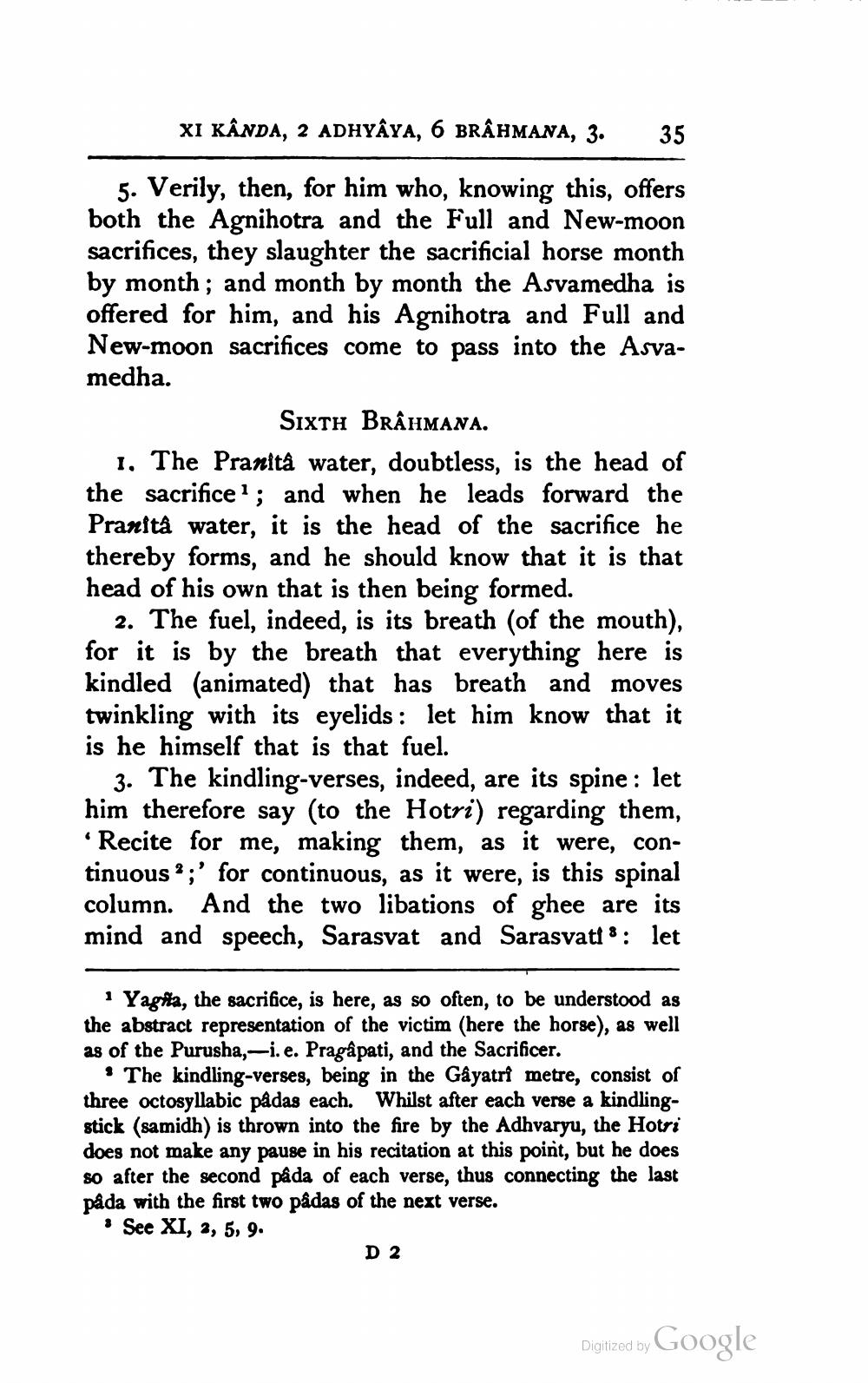________________
XI KÂNDA, 2 ADHYAYA, 6 BRÂHMANA, 3.
35
5. Verily, then, for him who, knowing this, offers both the Agnihotra and the Full and New-moon sacrifices, they slaughter the sacrificial horse month by month; and month by month the Asvamedha is offered for him, and his Agnihotra and Full and New-moon sacrifices come to pass into the Asyamedha.
Sixth BRÂumana. 1. The Pranità water, doubtless, is the head of the sacrifice'; and when he leads forward the Pranità water, it is the head of the sacrifice he thereby forms, and he should know that it is that head of his own that is then being formed.
2. The fuel, indeed, is its breath (of the mouth), for it is by the breath that everything here is kindled (animated) that has breath and moves twinkling with its eyelids : let him know that it is he himself that is that fuel.
3. The kindling-verses, indeed, are its spine : let him therefore say (to the Hotri) regarding them, • Recite for me, making them, as it were, continuous ? ;' for continuous, as it were, is this spinal column. And the two libations of ghee are its mind and speech, Sarasvat and Sarasvati 8 : let
1 Yagtta, the sacrifice, is here, as so often, to be understood as the abstract representation of the victim (here the horse), as well as of the Purusha, -i.e. Pragâ pati, and the Sacrificer.
The kindling-verses, being in the Gayatri metre, consist of three octosyllabic pâdas each. Whilst after each verse a kindlingstick (samidh) is thrown into the fire by the Adhvaryu, the Hotri does not make any pause in his recitation at this point, but he does so after the second pâda of each verse, thus connecting the last påda with the first two pådas of the next verse. * See XI, 2, 5, 9.
D 2
Digitized by Google




